Our first stop after lunch was to the New Library of Alexandria, Bibliotheca Alexandrina, which is Latin for Library of Alexandria. The library was opened in 2002 and is completely modern in its appearance with its most prominent feature, a giant angled disc that appears like a sun emerging from the Mediterranean Sea, fully visible only from an aerial view.
For such a famous library, the entrance is surprisingly modest and unassuming. The library complex is made up of several main parts, the library itself, several museums showing permanent collections and temporary exhibitions, a planetarium and a conference center.
The library runs tours throughout the day in English, Arabic and French and we joined one of the afternoon tours. The tour was led by a student from Alexandria University, whose campus is located just beside, who was volunteering at the library. The library was first conceived in the 1970s and over the course of the following decades, came to fruition under a collaboration between Alexandria University, UNESCO and the Egyptian government. The vision for the library is to “promote culture and science, learning and knowledge” and to be “a place for meeting and dialogue, where together we can work to promote a better future for all.”
After an introduction, our student guide brought us to the stunning main reading room of the library. Visitors are separated from the hall itself by a glass partition so tours won’t disturb those using the library. The hall is an impressive sight because of its sheer size and height. Natural light streamed in through the slanted windows that formed the roof. The roof is designed so that natural light can shine into the reading room but it is diffused sufficiently so as to not cause any damage to the books. The tall columns in the reading room are inspired by the lotus flower columns that were found in temples in Upper Egypt during ancient times. The oblong holes on the walls of the reading room are decorative features inspired by the original library’s storage system for ancient papyrus scrolls and also acoustical features designed to absorb sound.
We wandered through several of the museum exhibitions downstairs including one called “The World of Shadi Abdel Salam” who was an Egyptian filmmaker best known for his creative set and costume designs. Our student guide had mentioned that this exhibition was her favorite part of the museum because she loved his movie, The Mummy (The Night of Counting the Years) that was released in the 1970s, not to be confused with the recent Hollywood production.
The kids were patient through the entire tour but they were counting the minutes before it ended so they could check out the children’s library upstairs. We followed the rainbow stairs to the upper level and quickly discovered the children’s library. The kids were thrilled to go inside and began eagerly browsing through several shelves of children’s books. Besides us, there were only a few other people in the library. A staff came by and asked RY his age. He was told he couldn’t stay in the children’s area because he was too old and was directed to the youth library. Ok.
The staff then informed us that for both the children’s and youth libraries, parents are not allowed to join their children inside, so we were asked to wait outside. Fine.
I was annoyed at all of these rules but the children were content and getting settled with their book choices. As we were leaving the children’s area, a staff came to ask me EY’s age. Apparently, she was too young to be in the library, so I was told to bring her outside with me. Seriously?
I tried to politely discuss allowing EY to remain inside the library with her siblings, or to sit quietly at the table, but the staff wouldn’t budge. “The rules are the rules.” They already kicked RY out of the library and now they were going to kick EY out. This was really the last straw. It seemed they were weeding us out one by one. As a matter of principle, I told all the kids that we couldn’t stay. We went to fetch RY from the youth library but we weren’t allowed to go inside because we were not within the welcome age range of 12-17. Incredulously, I asked the staff at the entrance, how I was supposed to retrieve my son inside. They couldn’t give me any reasonable answer other than, “Just wait.” You have got to be kidding me.
This was beyond comprehension and the staff saw that I was about to lose it, so they made an exception and allowed Leo to go inside to get our son.
Annoyed (me) and disappointed (the kids), we descended the stairs back to the main entrance where Dina was waiting for us. I told her what had happened and she was similarly disappointed by the rigidity and poor training of the largely student volunteer staff that undermined the aim of the library to be a place of learning. She encouraged me to submit feedback to the management. To my pleasant surprise, the women at the service desk were courteous and sympathetic. They even gave me a professional-looking feedback form that I diligently filled out. When I finished, the lady at the desk handed me a tear-away strip from the form with a reference number and told me that somebody from the library would contact me within the next few days to follow up. I was very impressed by the customer feedback system and though I wanted to believe that I would actually receive a call or email from management, I wasn’t holding my breath. I never did receive any follow-up from the library.
Besides books, the Bibliotheca Alexandrina holds a treasure trove of museum exhibitions spanning ancient to modern times and covering diverse subject areas ranging from political figures to ancient artifacts to Medieval instruments of astronomy to textiles and fashion.
Dina led us on a quick tour of parts of the museum exhibitions in the basement of the library. We browsed through the works of Mohie-Eldin Hussein, a master of contemporary Egyptian ceramics and sculpture. My brother and I are both interested in ceramics and enjoy pottery and wheel throwing, so this was a visual feast for us to enjoy. AY enjoyed browsing through the textile and jewelry exhibits in the museum.
We exited the main library building and headed in the direction of the Sea. It was a beautiful day and the fresh sea air put everybody in a good mood. We walked through the Plaza of Civilization between the library and the conference center and were met by the bust of Alexander the Great. His expression shows him as determined and ambitious, with his sight set just beyond the horizon. He gazes in the direction of library, with his back to the Sea. Over 2,300 years have passed since his founding of the city of Alexandria in 332 BC. Alexandria has survived the rise and fall of civilizations, wars and occupations and it is nothing short of a glorious achievement for the legacy of the great Library of Alexandria, and all that it represents, to live on in its modern incarnation as the Bibliotheca Alexandrina.
From this side of the library, we could see part of the façade wall of the library that is inscribed with the scripts of 120 languages, both living and extinct. As we left the Biblioteca Alexandrina, we caught a fleeting glimpse of the colossi of Ptolemy II. This statue was found in the Mediterranean Sea and retrieved in pieces. Some archaeologists believe that the statue was part of a royal couple that once flanked the Lighthouse of Alexandria.
***
I believe that my family’s experience is not representative of the vision of Bibliotheca Alexandrina, which according to their website, is:
To be a center of excellence for the production and dissemination of knowledge and to be a place of dialogue and understanding between cultures and peoples.
In reflecting on this experience, my initial thoughts centered on the importance of setting appropriate policies and rules in an organization to achieve the desired results. As a starting point, knowledge and learning should be inclusive and accessible to everyone. There are and should be rules to manage the operations of the library, but they should be in place to facilitate access to the knowledge, not to create barriers around it. Perhaps the age restrictions for the children’s and youth library are too rigid. The strict age prescriptions don’t account for families with multiple children, neurodivergent children who may need to be accompanied by an adult or children who read at a different reading level than is typical for their age.
Then my thoughts drifted to the front-line staff who interact with visitors every day. An organization can’t rely entirely on policies and rules. One of the most challenging parts of any organization is in the management and training of the staff so that each and every person shares and upholds the vision of the organization. The staff, even if they are volunteers, need to be trained properly and then empowered to take into consideration the specifics of each situation. In this case, the student volunteers were too inflexible in their adherence to rules.
Our experience in the children’s and youth library was disappointing and unfortunate but it didn’t detract from our overall enjoyment of our visit to the library.
Author
-

Song is the mother of four children. She and her family have stepped away from it all and in September 2023, began traveling the world while homeschooling. Song is an ABC (American born Chinese) and has an undergraduate degree from Cornell and an MBA from Harvard. She is an entrepreneur and an educator. Her hobbies include learning, traveling, reading, cooking and baking, and being with children.


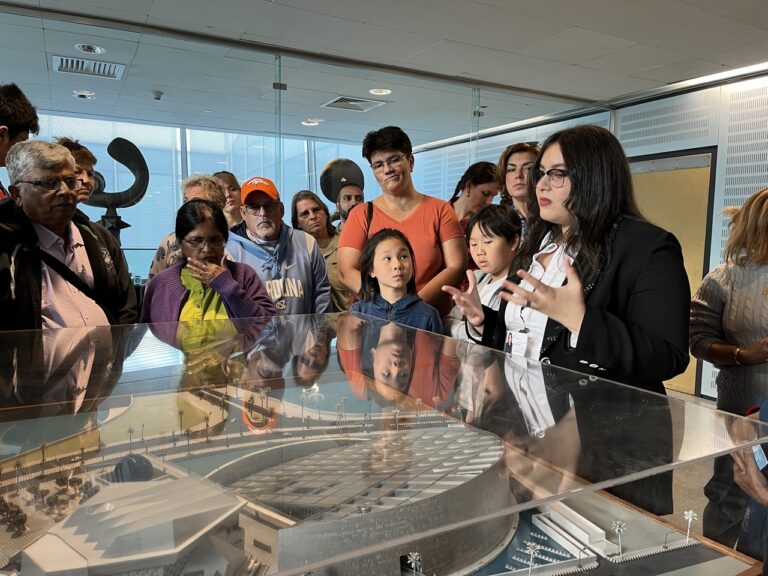
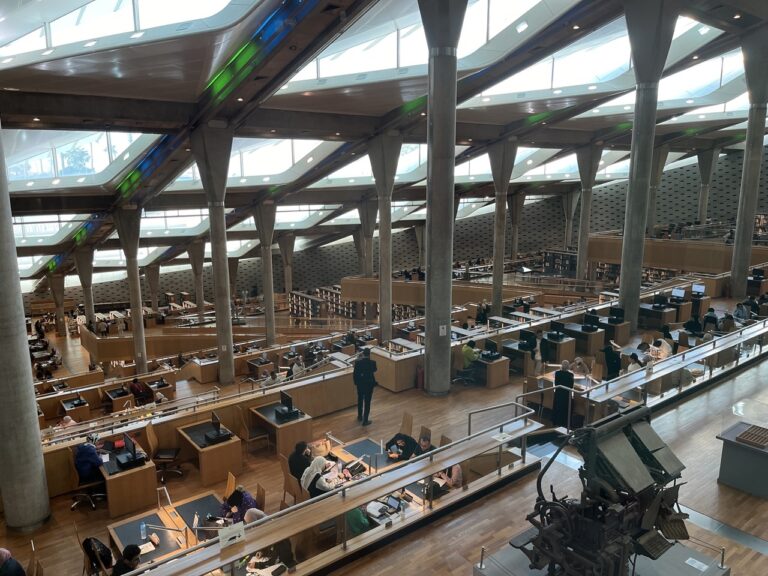
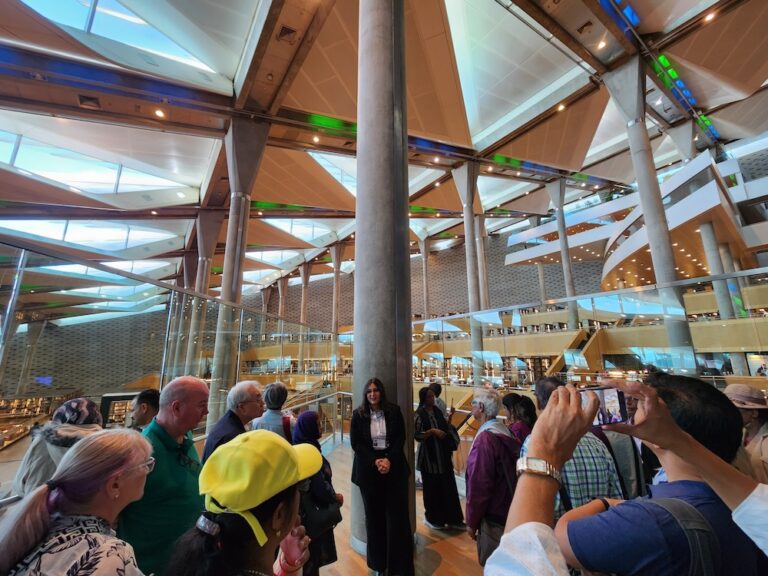
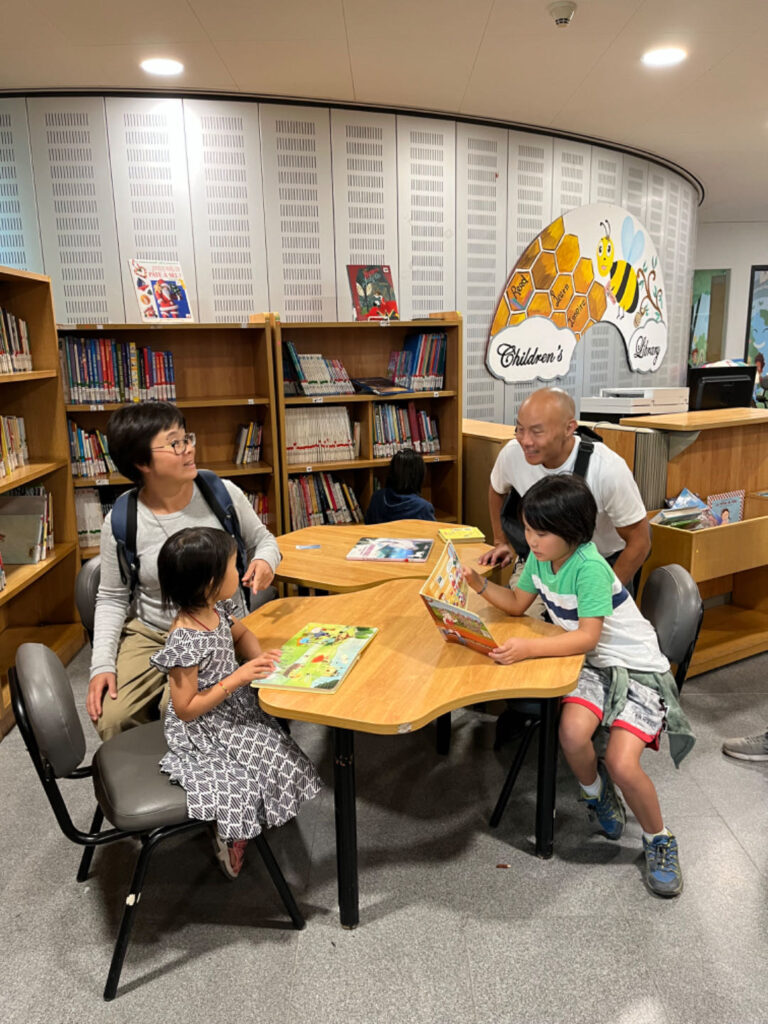

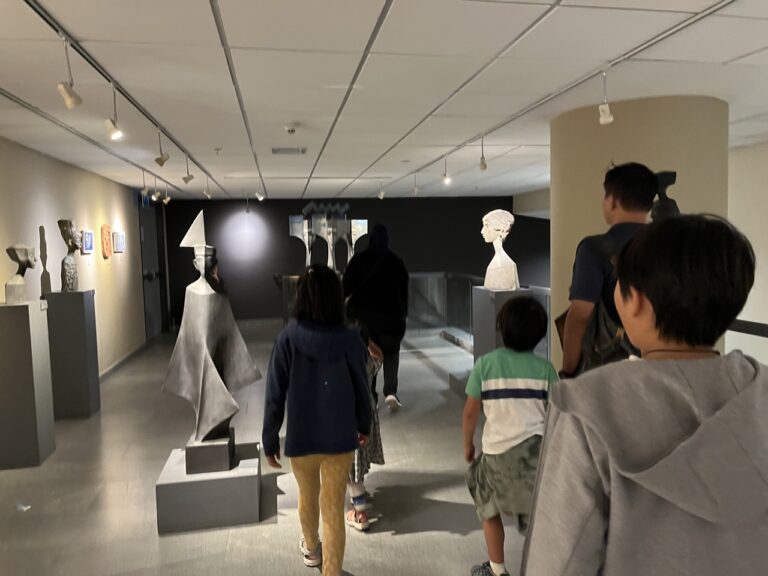

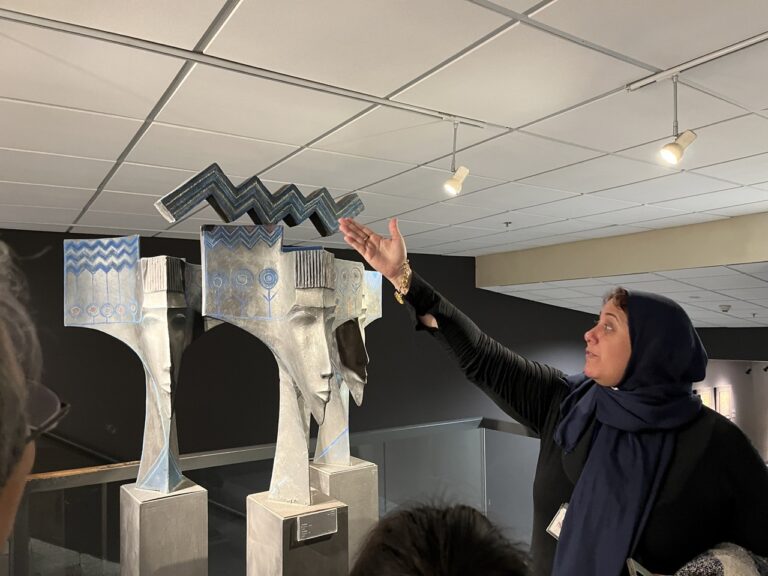
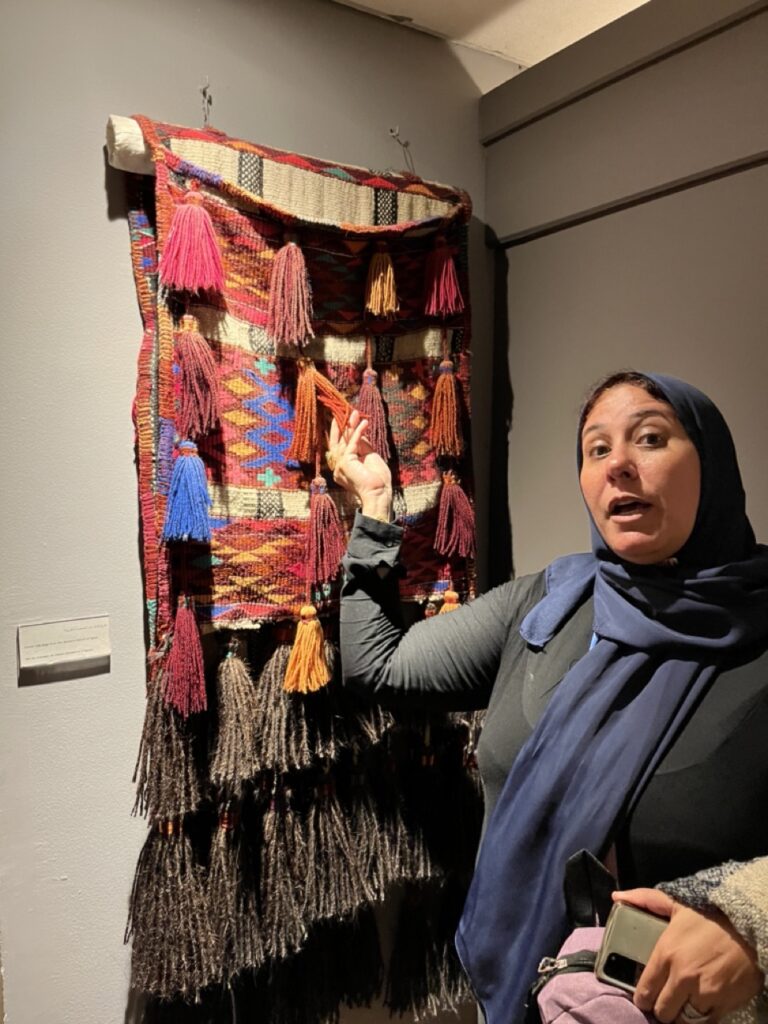

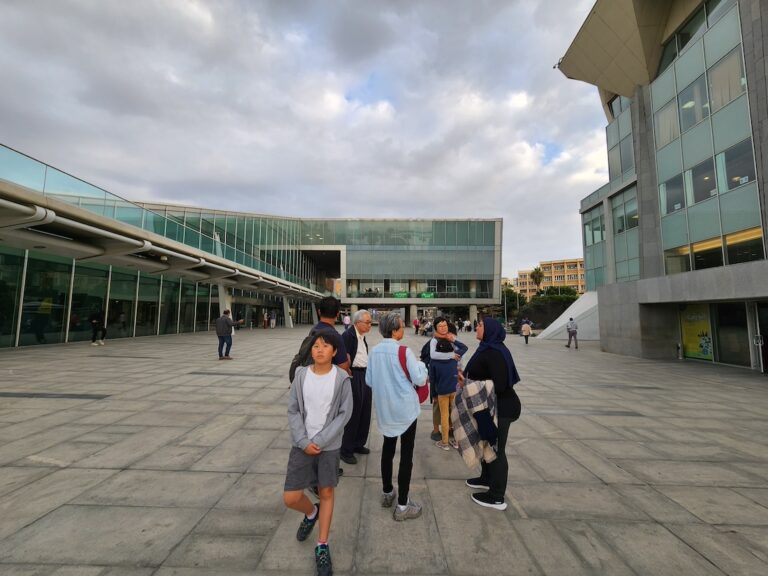

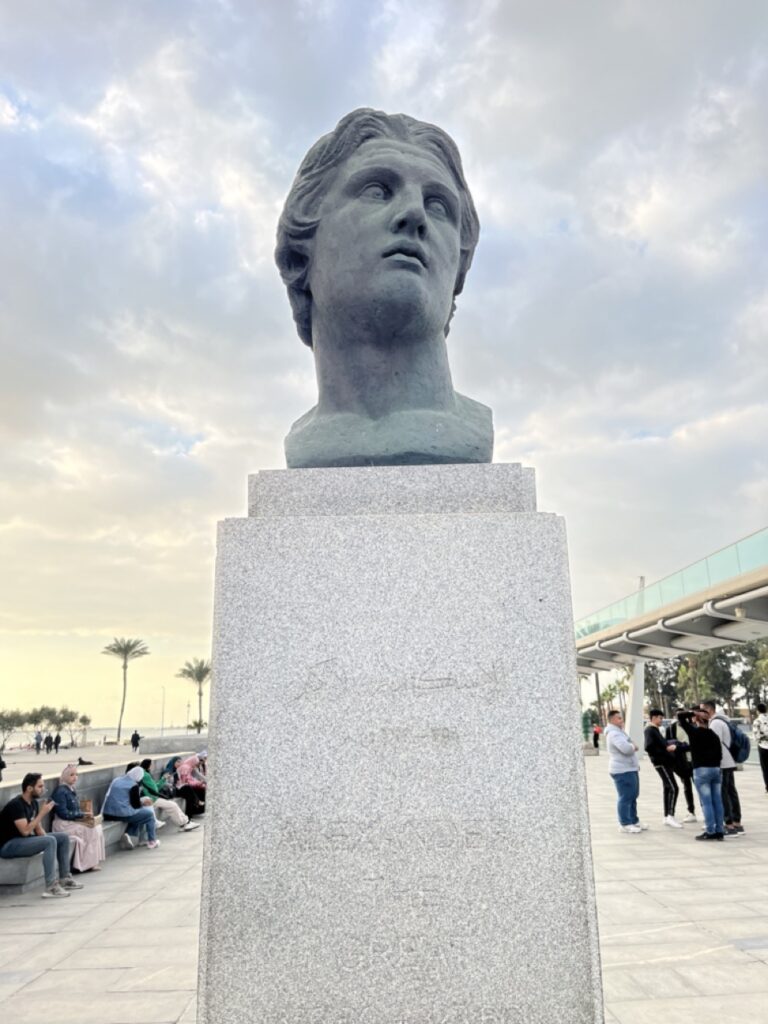


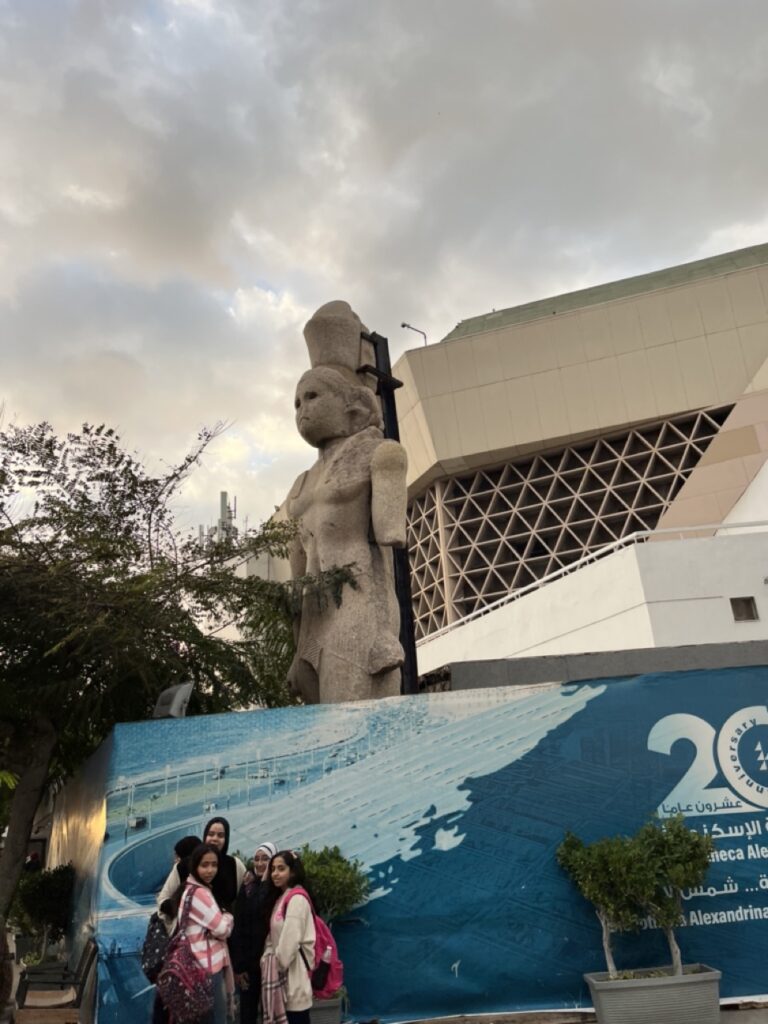
11/28 新亞歷山大圖書館
古館知識寶藏櫃,圖書學者四海歸。
文化中心數百年,科文哲藝世之最。
兩場火災古館毀,後世描述無人會。
兩千年後館重建,收藏研究交流會。